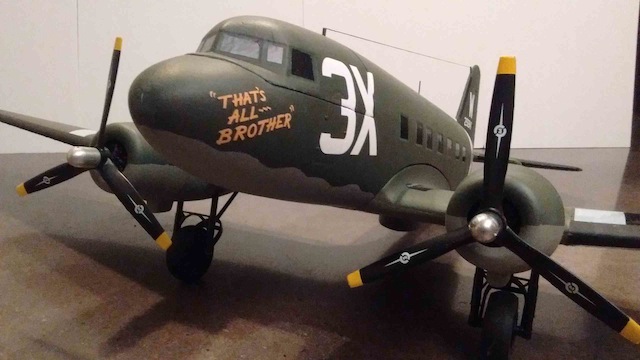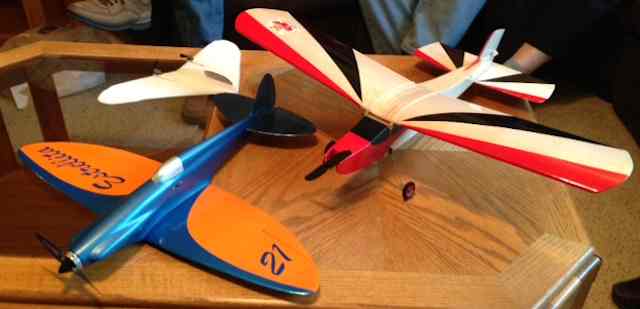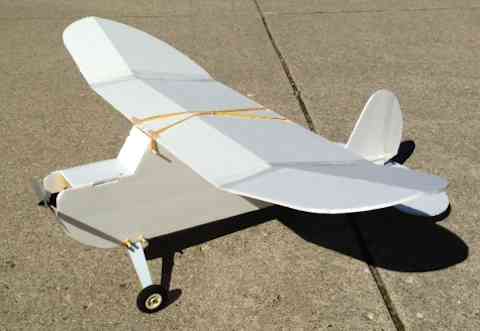 |
Flying High With Electric Power!
The Ampeer ON-LINE!
Fly the Future - Fly Electric! |
|---|
Site Table of Contents
| President: | Vice-President: | Secretary-Treasurer: |
| Ken Myers | Richard Utkan | Rick Sawicki |
| 1911 Bradshaw Ct. | 240 Cabinet | 5089 Ledgewood Ct. W. |
| Commerce Twp., MI 48390 | Milford, MI 48381 | Commerce Twp., MI 48382 |
| (248) 669-8124 | (248) 685-1705 | (2480 685-7056 |
 | ||
| Board of Directors: | Board of Directors: | Ampeer Editor |
| David Stacer | Arthur Deane | Ken Myers |
| 16575 Brooklane Blvd. | 21690 Bedford Dr. | 1911 Bradshaw Ct. |
| Northville, MI 48168 | Northville, MI 48167 | Commerce Twp., MI 48390 |
| (248) 924-2324 | (248) 348-2058 | (248) 669-8124 |
| The Next Flying Meeting: Date: Saturday, May 7 Time: 10 a.m.
Place: Midwest RC Society 7 Mi. Rd. Flying Flied | ||
| An A123 Conundrum Bob Comerford notes how difficult it is to get A123 cells in Australia any more. | Upcoming Keith Shaw Birthday Party Electric Fly-in 2016 Meet announcement from Dave Grife. | |
| The March 2016 EFO Meeting Highlights from the March meeting; Keith Shaw's GeeBee & indoor Taube, Part 3 of "Learning About LiPo Batteries", the Revolectix Gt500 charger. | Revolectrix (FMA Direct) Gt500 Multi-Chemistry Charger Ken reviews this charger. | |
| A C-47 Owen Morgan shares some photos of his new C-47 model. | The April EFO Meeting Highlights of the April meeting including Keith's new and restored planes and a photo of Ken's Old Fogey. | |
From Robert Comerford, via email From Australia Robert recently sent along an email noting a problem that he is having obtaining A123 cells. We have a lot of folks in our local flying group that use these cells, and it just may become a problem for us as well. Hi Ken, I take it you are getting into LiPo batteries for some applications. While I have been a dedicated LiFePO4 man since coming back into flying, I now find myself looking for other alternatives. The issue is the decreasing availability of A123 quality cells over here. Our supplier of choice has been Hobby King for many years but their stocks are constantly going on the backorder listing and the last lot I purchased contained a dud cell. In all the years, and all the cells our group has bought, this is the first dud hard cased cell (2500mAh in this instance) we have ever had. All other cells are still going good, only those damaged in rapid landings have been discarded. Due to increasing costs for shipping of lithium batteries from this source I have tried other sources of supposedly genuine A123 cells. Short story is they were all duds. While I probably have enough packs to see me out, if I don't bend them, I have to find a suitable alternative for newbies. Fire risk on our field is a big issue and we have already had a couple of LiPo fires among the group. Fortunately none were in downed planes. While it is possible to contain them when charging and storing, it is not practical once they are in a plane. I am thinking of using a suitable LiPo sack as the battery holder in planes as one way of reducing the risk. It might be one way of containing a fire from a damaged battery until we can get to the crash site with a fire extinguisher. I'm crossing fingers that the new graphene (probably graphene oxide - KM) cells from Hobby King with their claimed lower IR will keep cool and reduce the tendency for dendrite growth that produces internal shorts and subsequent battery fires. My regular flying mate and myself are going to give them a trial. It would be good if these cells also have a long life. We have been spoilt with cells that donŐt need babying and just go on performing year in, year out. Regards,
A note from Ken: I do know what you mean about being spoiled. For the time being, I'm only looking at LiPo batteries for small, under three pound, planes. I also should have enough A123 cells on hand to keep me going for many, many feature projects. I also see this as a problem for newcomers. For those still unaware of the 'new' Turnigy Graphene labeled cells from Hobby King, there is a RC Groups thread about them. Revolectrix RevoBlends is coming out with new GoPacks. The G and o standing for Graphene oxide.
Upcoming Keith Shaw Birthday Party Electric Fly-in 2016
The Balsa Butchers will once again be hosting the "Keith Shaw Birthday Party Electric Fly-In" at their field near Coldwater, MI. The event will take place on Saturday June 4, 2016. It will be a one day meet this year. The event consists of Open Electric Flying with a "Special Guest of Honor Theme". Enjoy a day with the "Pioneering Master of Electric R/C Flight". 8 am - 5 pm Saturday, $10 landing fee. For additional information contact Dave Watson 517-250-6190 or email: flybuddy619@yahoo.com
The field will be open to guests to fly Sunday as well. Directions: Quincy is approximately 4.5 miles east of I-69. Clizbe Road is approximately 1.6 miles east of Quincy. The Flying site is approximately 1.5 miles south of US-12 on the west side of Clizbe Road. 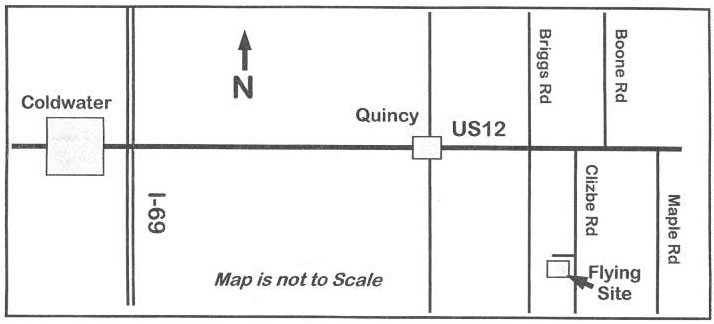 The March 2016 EFO Meeting The March EFO meeting, at Ken Myers' house, was a good one. There was a lot of good information shared, as well as a good show and tell for planes and new products. 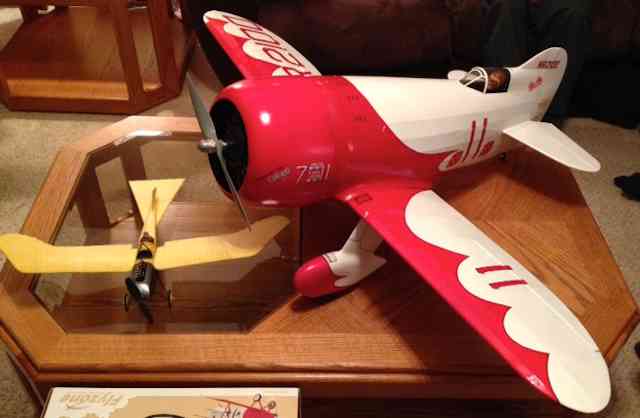 Keith Shaw brought his 30+ year old GeeBee. He recently repaired the wing from a previous misadventure, and added new engine detailing to the cowled in motor. He is extremely happy to have this one back in flying stead. It will be showing up on the circuit this summer. (YES - this plane is over 30 years old!) Keith also shared his new, small-scale Taube. Here are the details and some more photos of the little Taube that Keith shared via email.  The little indoor Jeannin Taube is ready for a test hop, so I thought I'd send a few photos.ĘIt has a 20" span, 75 sq.in. of wing area, and weighs 1.45 oz with 160mAh battery. It uses the guts from a Flyzone Albatros that had a 15" span, 54 sq.in. of wing area and 1.2 oz. weight.  There is still a lot more detailing to do, but want to be sure it flies ok. BTW, I've made the underwing radiators, the gas tank, and exhaust pipes but haven't painted them yet.  I did the "S" airfoil by hot-wiring some EPP, then trapped the 2mm Depron between. I put the foam assembly between two boards and weighted it. I preheated the oven to 2500F, turned it off and installed the weighted mold. When it is cooled, the Depron wing it holds it shape. I put in a few ribs to help spread the loads from the carbon spars. The two carbon spars fit into two bent aluminum tubes in the fuse. It's a stiff enough mount that I don't think a latch is needed. The only big change I had to make to the original design was to stretch the nose quite a bit to get it to balance, even with all the equipment as far forward as possible. Those early planes had boat-anchor engines, so short noses. The prop should be about 1/4" ahead of the front cylinder but I had to extend the nose an additional 1/2". 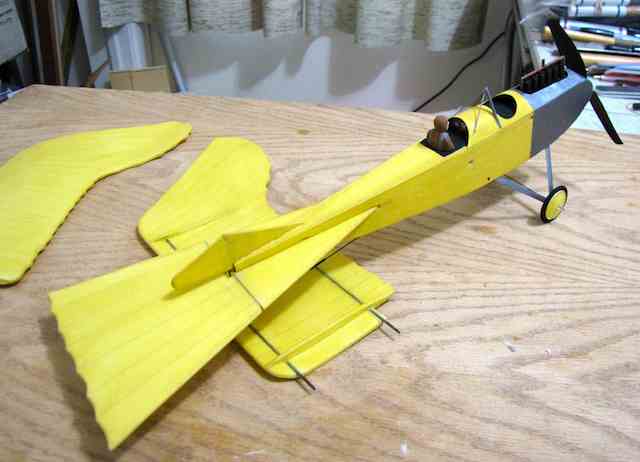 I took the magazine with photos of a museum Taube to Ace Hardware and got a custom "test can" for $1.99. Experiments with airbrushing were marginal (but I'm not good at spray painting). After tinkering on some foam scraps, I found that dry-brushing the full strength paint, with a fairly stiff brush, produced an almost translucent stained effect. I had done rib markings with a fine pen beforehand.  The Taube was not covered with doped linen, but balloon fabric stretched tight and glued on with something like rubber cement. Of course I now have enough paint to do about 500 more planes. Now I need to build a carrying case for it. I may use the original Albatros box. He did make a carrying case from the old Albatros box. Part of the box can be seen in the photo of the GeeBee and Taube. KM Ken Myers presented Part 3 of his "Learning About LiPo Batteries" investigation. Part 3 includes a bit of LiPo history, where many of the use and care recommendations came from, and why actual FACTS regarding almost all aspects of Lithium Polymer Pouch Batteries (LiPo Batteries) are difficult to come by. Ken also demonstrated his new Revolectrix Gt500 charger. It is reviewed in this issue. While the members enjoyed their evening snack, Ken brought up Denny Sumner's build thread of his Mooney Mite on RC Groups. It is finished now and will be heading down to be on display at the Toledo RC Expo. 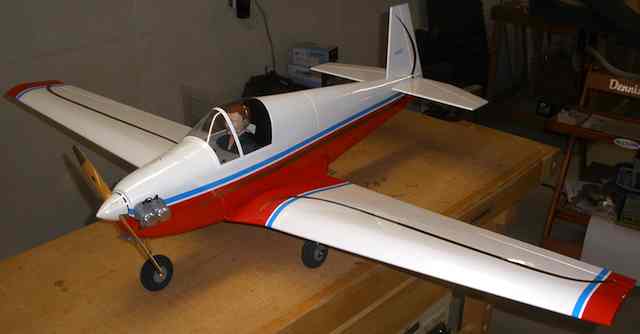 Revolectrix (FMA Direct) Gt500 Multi-Chemistry Charger
I've owned several different chargers since the "Lithium age" started. My first was an AstroFlight 109. It was used to charge early LiPo batteries and, when combined with the Terminator II, A123 packs and Emoli cells. Balancing was done using AstroFlight Blinkies for LiPo and A123. My first balancing charger was the FMA (Revolectrix) CellPro 10S. It was absolutely excellent and provided many years of service. It became my 'backup' charger, and still is, when I purchase the excellent FMA CellPro 10XP. The 10XP still gives flawless service. The FMA (Revolectrix) CellPro 10XP has been my go to recommendation for a charger when folks are 'getting into' electric flight.  Unfortunately, the 10XP is being phased out. I had recommended it because of its reliability and ease of use, especially ease of use. The first year that the CellPro PowerLabs came out, I purchased one at Toledo. After receiving the PowerLab and reviewing the manual, I decided that it was way more charger and way more complicated than I wanted. I sold it without ever using it. The Revolectrix (FMA Direct) Gt500 picks up where the CellPro 10XP left off, especially with ease of use. 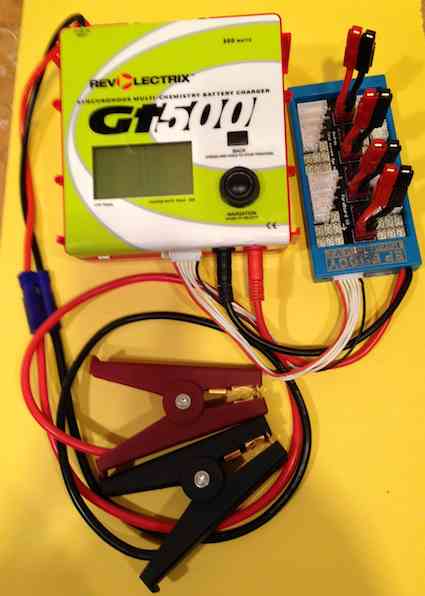 The 10XP was relatively easy to set up using a Windows computer and the required FUIM3 USB Interface Module. Trying to adjust the presets using the two buttons on the charger was quite a daunting task. With the Gt500, all of the adjustments and changes are made easily on the large screen, back-lit display using a scroll wheel and two buttons. A Windows computer is only required for firmware updates. A Mini USB cable, NOT Micro USB cable, is required to update the firmware. Any change made to a specific chemistry type, and the charger does eight different chemistries, can be named and saved as one of 28 presets. The very first preset I made was for charging my A123 cells. The current was set to 10 amps and charge termination voltage to 3.75V per cell. That is what I did with the 10XP, but in a much more convoluted way. Battery types from the manual: "Lithium Polymer HV (1s to 8s balanced, 1s to 2s unbalanced), Lithium Polymer (1s to 8s balanced, 1s to 2s unbalanced) Lithium Ion (1s to 8s balanced, 1s to 2s unbalanced), Lithium Manganese (1s to 8s balanced, 1s to 2s unbalanced), A123 (LiFePO4) (1s to 8s balanced, 1s to 8s unbalanced), NiCd (1s to 21s), NiMH (1s to 21s), Lead Acid batteries (1s-12s Flooded, Gel, AGM, SLA)". The annotation for the Lead Acid battery confused me for a minute, because voltage was given for previous FMA chargers. A 12V Lead Acid is a 6 cell/6s battery at 2 volts nominal per cell. The unit can charge, discharge, storage charge/discharge, cycle, and monitor. In the monitor mode, it checks the pack's voltage and individual cell voltages. There is no current flowing during the pack monitoring, therefore it DOES NOT give the cells' IR. The IR is computed and displayed during charging. It has a regenerative discharge capability of up to 20A when attached to a Lead Acid battery. Regenerative discharge means that while it is discharging, it is recharging the Lead Acid battery. If the charger is attached to a power supply, regenerative discharging is not available and the discharge is limited to 50W at up to 8A. With the power available, I plan to do 2C parallel charging on all of the 3S 1000mAh packs that I've acquired. That is one reason a Buddy RC ParaBoard V3 is shown in the charger photo. The balance connector on the charger is the very common JST-XH. That ParaBoard can charge one to four packs of the same voltage (same pack series configuration). The V3 ParaBoards can also be daisy changed to parallel charge even more packs. A single pack, with a JST-XH balance connector, up to 8S, can be plugged into the charger and a power cable with the appropriate pack power lead connector and 4mm banana plugs can be used. For me, just using the ParaBoard was an easy and cheap solution. 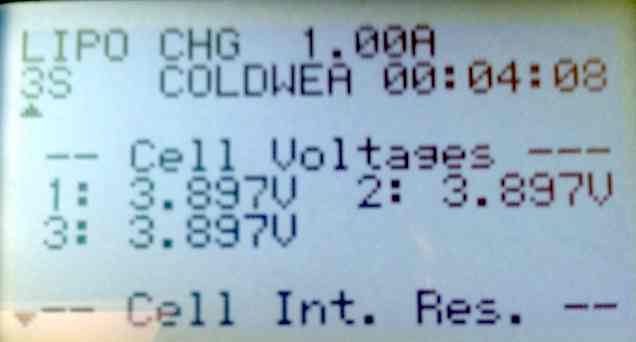 Some of the information on the Gt500 notes that it does not have a 'Cold Weather' setting. It does. Progressive RC notes no cold weather setting. Look under the Specifications tab. Firmware update 2.16 added that feature. The 'Cold Weather' setting allows for charging at less than an ideal ambient temperature and provides a 'set back' of the terminal voltage adjusted to ambient temperatures of less than 500F/100C. There are three temperature selections and four voltage 'set backs'. Batteries should NEVER be charged when the ambient temperature is BELOW 320F/00C, although the charger does allow this. MY first problem arose when I tried to download the FREE firmware update software from the Revolectrix Web site. This is really MY problem, not a problem with the software. For my RC needs, I use a very old NetBook style computer running Windows XP. I checked and found that the computer looked like it had NET Framework 4 installed. A very helpful gentleman at Revolectrix in Singapore, Fong, worked me through the problem and all was well after I went to the Microsoft Web site and installed the most recent version 4 of the NET Framework. After the installation of the correct NET Framework, the Firmware Update software installed. I did not have a Mini-USB cable. I spent quite a bit of time physically searching for one locally. Micro-USB cables abound everywhere, but not Mini-USB cables. I finally found one at one of the few mom and pop computer stores left in our area. I found out later that most of my flying buddies, who use Windows computers, have a lot of them just laying around. I managed to lose one of the black rubber feet off of my new charger. When I let Fong know, he immediately sent out some new feet. Very nice. Firmware update 2.16 added the 'cold weather' feature to the charger. Mine didn't seem to be working correctly, as it appeared to note 'COLDWEA' even when I was in an environment where the ambient temperature was well above 500F. Again, Fong came to my rescue. The final 'issue' I had was when I wanted to do a capacity check on one the many 3S 1000mAh packs I had on hand. I chose one that I knew was bad, based on my testing. I thought that it might show diminished capacity. I fully charged the battery, set the discharge amps to 0.2 (200mA) and voltage termination to 3.2V per cell. After about 5 hours at this low discharge rate, the charger noted 1000mAh discharged, but the voltage was noted as 3.4V per cell. I stopped the discharge and then did a recharge. The charger noted that it was 'done' when about 755mAh was returned to the pack, but it only reported as 97% full. After many email exchanges between myself and Fong, and retests done by both Fong and myself with good batteries, we decided that my original 'whacky' results were just another way of demonstrating a 'bad' pack. Our other discharge and charge results were right where we expected them to be. With support like this, I cannot recommend Revolectrix highly enough! One last, little, really nit-picky thing, and I mean really nit-picky. I hate the color! To ME the color choice for the interlocking plastic case, red, and the green and white wavy design on the faceplate gives it a gaudy, 'toy-like' appearance. Its performance is anything but 'toy-like'! It is for those of us that want a simple to use, medium power level charger. In other words, most of us. The indoor fliers have their own special needs, as well as the high power level users. Some folks, especially those into 'battery testing and management', want to control, and record onto computers, all kinds of data about specific LiPo battery packs. This is not the charger for them. That is what the PowerLab series of chargers is for. For those of us who just want to fly and prefer a KISS charger, this could just be OUR charger. The Revolectrix Gt500 and Cellpro PowerLab, Plier Clip can be purchased from FMA Direct for $139.95 + $15.95 = $155.90 plus shipping. The Buddy RC ParaBoard is $25.95 plus shipping and a Mini-USB cable from Staples is about $5. Once all is said and done, this is a pretty good deal for about a $200 total investment. I have learned enough about this charger that it will be my 'go to' recommendation for a charger now. 500W (STD JST-XH balance port) Battery Charger with EC5-equipped input cable A YouTube video, by Jack Doherty, shows off many of the Gt500 features. A C-47
After sending out the February and March EFO meeting notices, I received the following from Owen. Have fun guys at the meeting. We moved to Wilmington, NC, but I'm with you in spirit.  Here's my current project. The C-47 has decals from Callie Graphics. I'm also working on making the wings on the Beaver detachable to make it easier to transport. Owen The April EFO Flying Meeting
Keith Shaw lead off the meeting by sharing three planes. Two were new, and one restored. The little flying wing is made of EPP foam. It uses the 'guts' from an AirHogs bipe. Control is via motor differential. The idea for the plane originated as a chuck glider in an old Model Builder magazine. It does have rounded leading edges. Keith heated an artist's pallet knife on one side, using a torch. Then the 'unheated' side was rubbed along the leading edge of the EPP and round it to shape. Very cleaver. He used Hormax Welder glue to assemble model. Keith recently sent me an email about the other two planes. Enclosed are photos of my most recently completed projects. The restored Estrellita and the vintage Schoolboy. The original tissue finished Estrellita wing disintegrated on a rough field landing a couple of years ago. Fortunately I still had the original Shark wing from the TeeDee .020 racing days. I stripped off the white trim, uncovered the tips so that I could reshape them to true elliptical. I had to do minor work to adapt it to the E fuselage and make an aileron servo mount. The tissue covered stab just got painted the same color as the fuse, easier than trying to cover the red tissue-covered stab with orange Econokote. While not my first R/C, the Schoolboy was the first to use my homemade transistorized receiver instead of the big tube stuff I had been flying. The original was built from drawings I made from a 1961 Model Airplane News. It was done in clear dope with some Japanese tissue trim. As I remember it was a portly 11 or 12 oz, but flew well on a PeeWee .020. This Schoolboy is a hybrid. I had an original Top Flite kit, and the wood for the wing was quite good, so it is stock. The wood for the fuselage and tail were another story. One fuselage side was iron hard and the other punk. There was no way to make a straight build. I just used them as templates and built a slightly modified one. It came out at 7.5 oz, using a 1813-2000 motor (?) and 2S Hyperion 550mAh pack. Unfortunately, even with the motor battery and radio as far forward as possible I had to add 1/2 oz. to the nose to get it to balance, so the final weight is 8.0oz. The color scheme is done in clear "PennyKote" (laminating film), with the trim done using So-Lite, and the pattern is close to what I remember of the original. I'm still working on the replacement BearKitty and the Klemm. Keith Roger Wilfong shared information that he'd recntly received regarding bird strikes on full scale aviation and how it could very well relate to 'drones' as well. He received the information via Joe Hass at the pre-Hobbico meeting at the Ultimate Soccer Arenas the last part of March. Mike Russell asked the group how to know when to use which brushless motor with which plane. He brough along three brand-new Cobra motors. There was quite a bit of conversation about this topic, but it boils down to motor weight and Kv. Ken Myers presented Part 4 of his "Learning About LiPo Batteries" investigation. Part 4 includes how to evaluate sources found on the Internet, the running and charging temperatures of LiPo batteries, and a list of sources that Ken has found to accurate. He also explained why he feels those are good sources.
Ken shared his latest flying thingy, an enlarged FliteTest Old Fogey. It is 1.22 times the size of the original. To Reach Ken Myers, you can land mail to the address at the top of the page. My E-mail address is: KMyersEFO@theampeer.org |
